
Simon Wittenberg reviews the newly-released Atlas of Car Design: The World’s Most Iconic Cars book from Phaidon Publishing.
Hot off the press from Phaidon Publishing is a bible of car design – a £100 tome which weighs in at over three kilos, so this really is a coffee table book that you can literally flick through for hours.
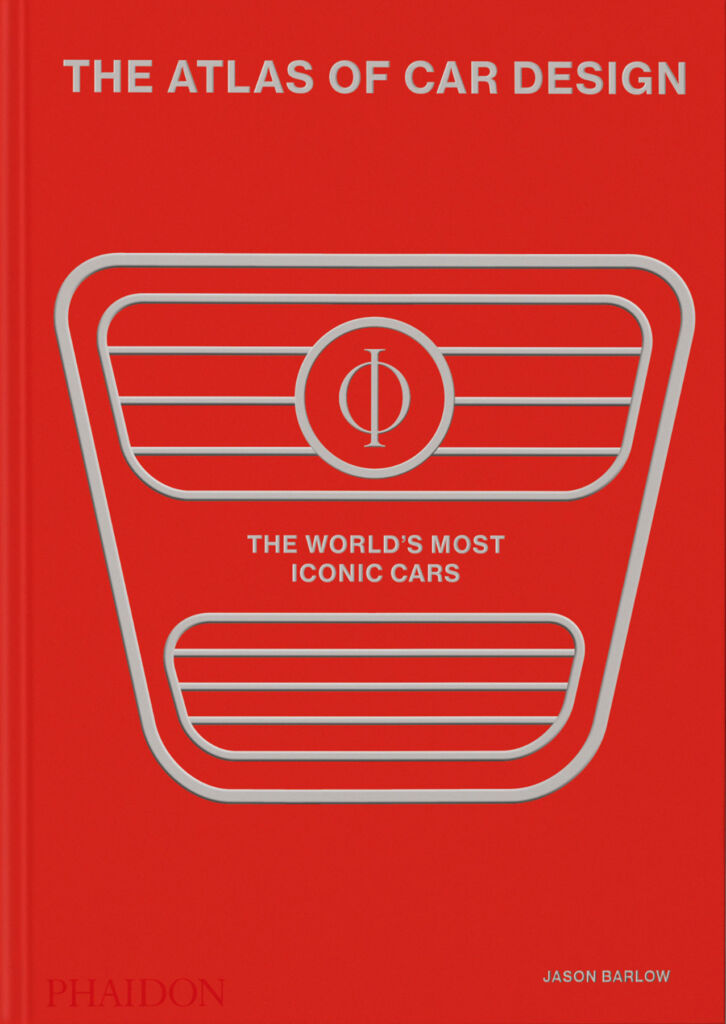 Named The Atlas of Car Design: The World’s Most Iconic Cars, and coming with a choice of a stunning Onyx Black and a high gloss Ruby Red finish, it has been penned by Jason Barlow – a motoring journalist and broadcaster from Northern Ireland, with assistance from Wallpaper* magazine contributor Guy Bird.
Named The Atlas of Car Design: The World’s Most Iconic Cars, and coming with a choice of a stunning Onyx Black and a high gloss Ruby Red finish, it has been penned by Jason Barlow – a motoring journalist and broadcaster from Northern Ireland, with assistance from Wallpaper* magazine contributor Guy Bird.
Going by the long list of acknowledgements at the start of this book, there have also been contributions from the likes of the car design gurus Stephen Bayley and Peter Stevens, whilst the authors have also been in touch with many vehicle manufacturer press offices and a plethora of advisors to put this brilliant piece of literature together.
Design is, of course, entirely subjective – what is one person’s taste may not be the liking of another, or in other words, “beauty is in the eyes of the beholder”. Plenty of cars have wowed and surprised over the last century, while others have been a little more controversial and eye-catching in the form they have taken.
The Atlas of Car Design: The World’s Most Iconic Cars takes readers all the way back to 1893 via 650 entries and 750 colour and black and white images spread across more than 560 pages. The book, which is beautifully narrated – demonstrating a thorough level of research, is divided by continent to explore some of the most iconic models which have graced different parts of the globe, starting with North America.
It’s here where you will find one of the earliest cars in the form of the Motor Wagon from the Duryea Motor Company, before several black and white images traverse readers to colour photography to bring models alive, such as the Ford Thunderbird from 1955, the AC Cobra, the Pontiac GTO, and of course the legendary Corvette Sting Ray from 1963.
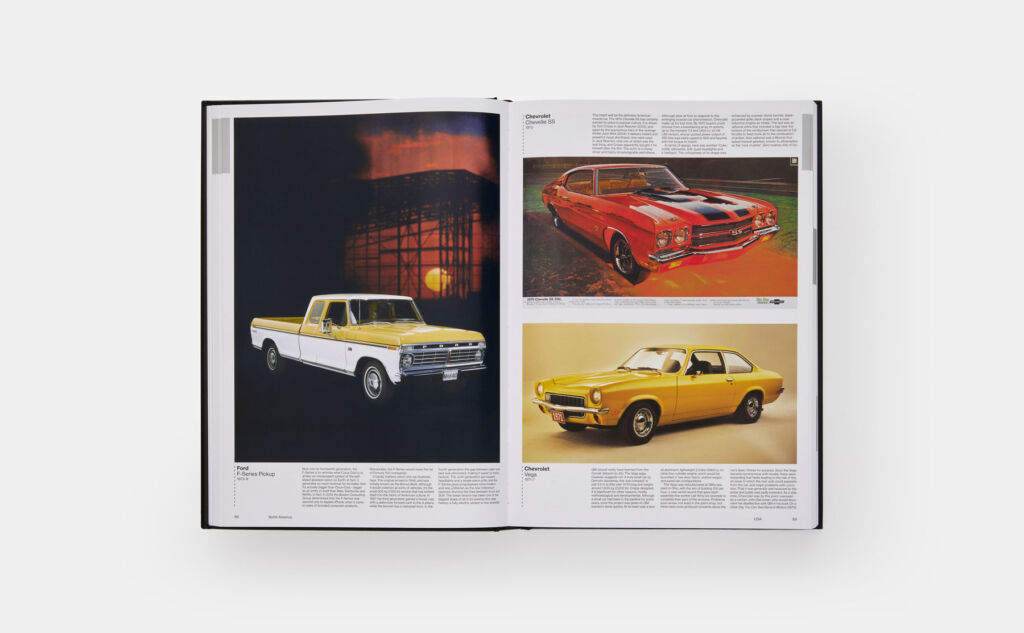
Some cars can be recognised from movies, historical posters and dinky toys, whilst car lovers are also treated to Buick, Dodge, and DeLorean, to name a few more brands that have been a part of the rich tapestry in this part of the world in years gone by. This chapter then closes with the rise of Tesla, with the yet-to-be-mass-produced Cybertruck, of course, featuring – an example of a wedge / doorstop-like design.
With the next section about Central and South America more brief in comparison to the aforementioned pages and heading over the border from North America, readers are drawn to the VUHL 05 from a company based in an aircraft hangar in Mexico and a look at some of the models which have started off life in Brazil and Argentina.
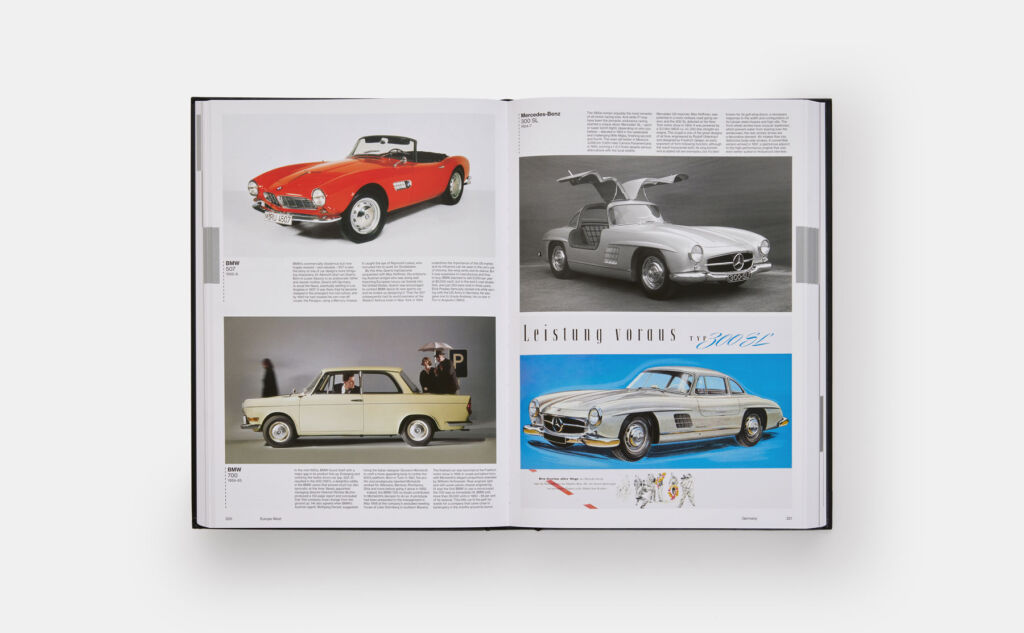
The “Europe West” section is, as you would imagine, comprehensive at around 200 pages, going by the plethora of marques in this corner of the globe. It’s divided into countries rather than by brand, which reveals some interesting bits of trivia away from the bigger brands, with Croatia responsible for producing the £2.5 million Rimac Nevera all-electric sports car, with Switzerland home to the Monteverdi High-Speed 375L from the 1970s, and Denmark – the brainchild behind the Zenvo ST1.
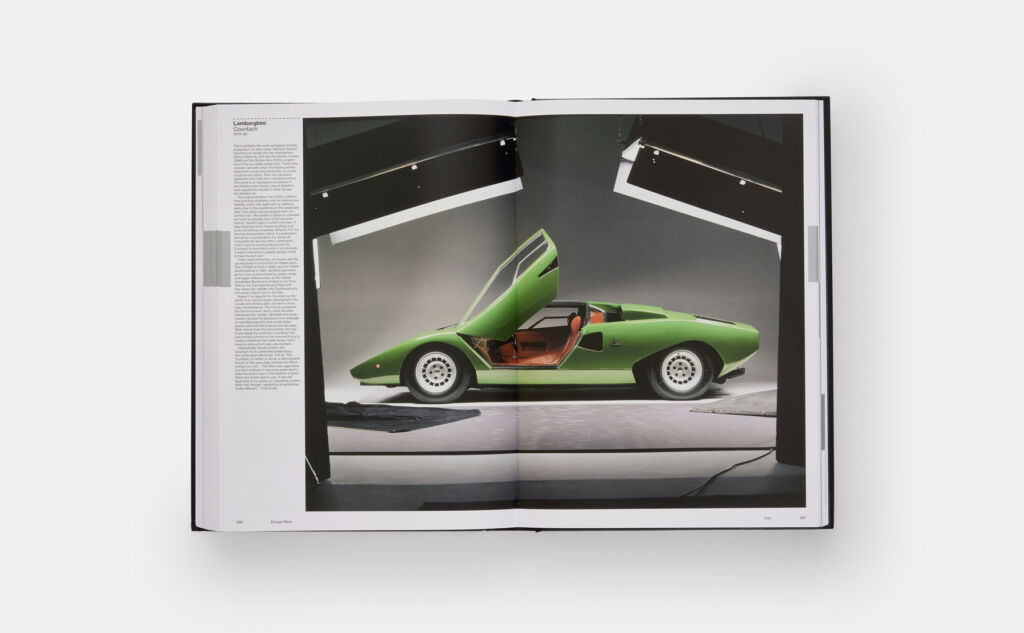
Those perusing the Car Atlas will, of course, come across some of the more famous icons, such as the Ferrari F40 and Testarossa, the Lamborghini Countach, and the Lotus Esprit – legendary and aspirational cars that graced childhood posters, and which stood out as true beacons of designer brilliance and creativity.
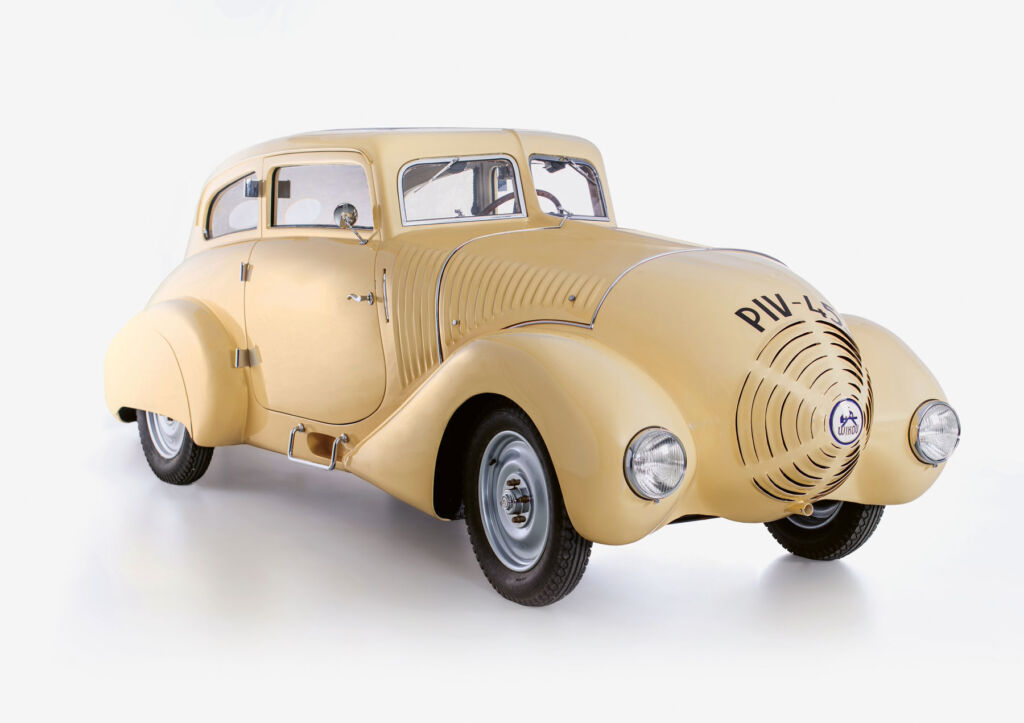
Similarly, Eastern Europe (from page 433 onwards) is a fascinating read, with Russia and the Czech Republic’s line-up of makes taking centre stage – with Lada and Škoda, to name just a couple, whilst space has also been given to the Dacia Duster from Romania, and the possibly more obscure and pointy Wikov 35 Kapka (above) emanating from what used to be Czechoslovakia, as well as the early examples of the Anadol A1 from Turkey, and the FSO Syrena from Poland.
Israel to Iran and through to Egypt, the Middle East and Africa have also been responsible for conceiving automobiles that have been seen on roads over the years, and there are a few pages dedicated to this geographical area. It’s then the sizeable section on Asia where this book really opens up again on some of the highlights from well-known marques, taking in the likes of Mitsubishi, Toyota, Mazda, and Subaru. However, the present day is also represented by China’s electric brand, NIO.
The Atlas of Car Design: The World’s Most Iconic Cars culminates with a really nice pictorial breakdown of the cars featured by decade and page number so that you can navigate straight to your favourites or those that have piqued your interest without having to sift through the different geographic regions to locate them.
What is also very handy in this book, and what has been very well thought out, is an A to Z of each of the vehicle manufacturers featured – i.e. when they were in operation and who founded and owns them – ideal for those who want to deepen their knowledge of the global automotive sector.
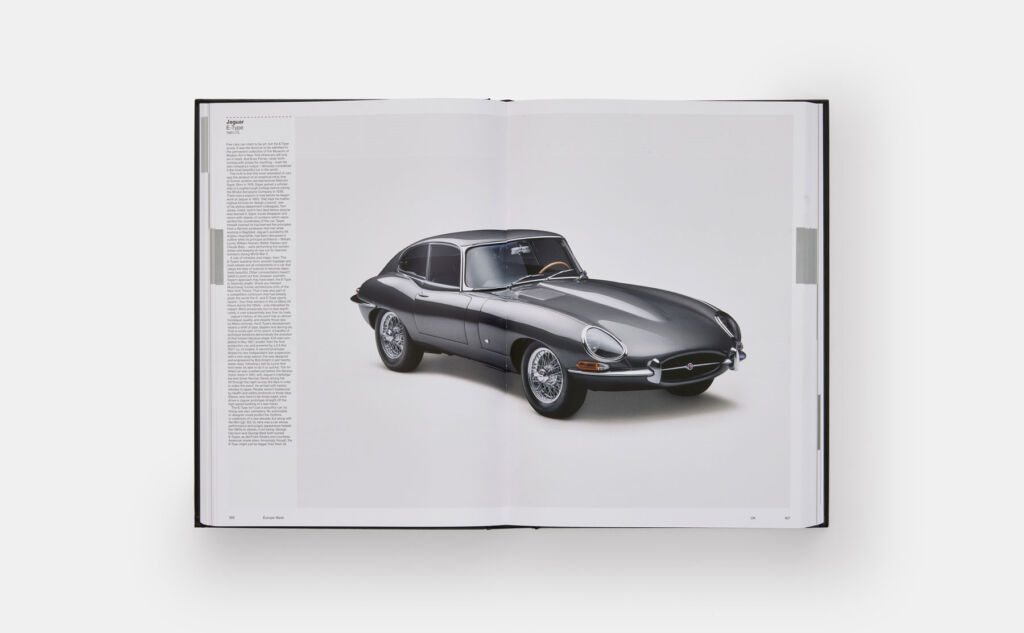
In summary…
This is a true bible of car design that would easily impress when sitting on a coffee table, but it is also a book that you can pick up once in a while, as it serves as a reminder of some of the true greats that have stood out in the sphere of automotive design across the decades.
It could even be an heirloom to pass down to the next generation to educate where some of the most beautiful profiles and elegant lines and curves all started off and how they have since evolved to accommodate changes in consumer lifestyles, needs, and wants.
It is a book that takes you on a journey and is one where you can become immersed in the facts, figures and stories of how cars were brought from concept to production and why some are revered as the finest of all time.
There’s something for everyone with this Car Atlas, spanning classics to modern-day favourites. Plus, with the festive season fast approaching, this will make the perfect gift for any car enthusiast who thrives on expanding their encyclopaedic knowledge of makes and models worldwide.
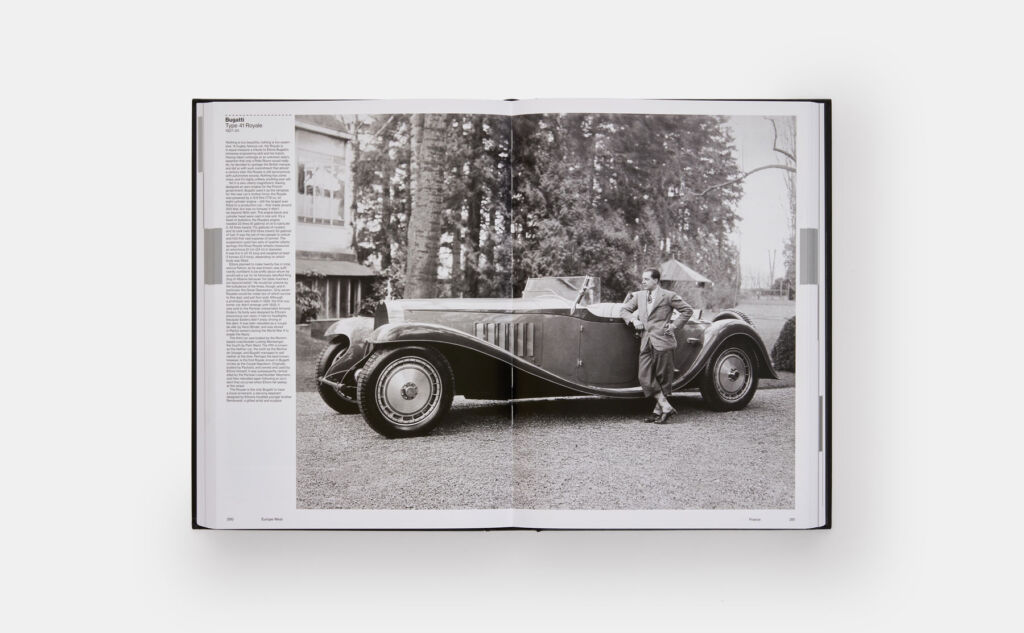
The Atlas of Car Design: The World’s Most Iconic Cars – Where and How?
The Atlas of Car Design: The World’s Most Iconic Cars by Phaidon Publishing is available from 14th September, priced at £100.
Image credits:
Chevrolet, Corvette Sting Ray, 1963–7, USA. Courtesy of General Motors (pages 62-63).
Cover and three following spreads: The Atlas of Car Design. The World’s Most Iconic Cars (Rally Red Edition). Jason Barlow, with Guy Bird and an introduction by Brett Berk. Phaidon.
Wikov, 35 Kapka, 1931, Czech Republic. Image courtesy of T.S.BOHEMIA a.s:(page 436, top).
The last two spreads: The Atlas of Car Design. The World’s Most Iconic Cars (Rally Red Edition). Courtesy of Jason Barlow, with Guy Bird and an introduction by Brett Berk. Phaidon.
For more information or to buy the book online, visit www.phaidon.com.
![]()

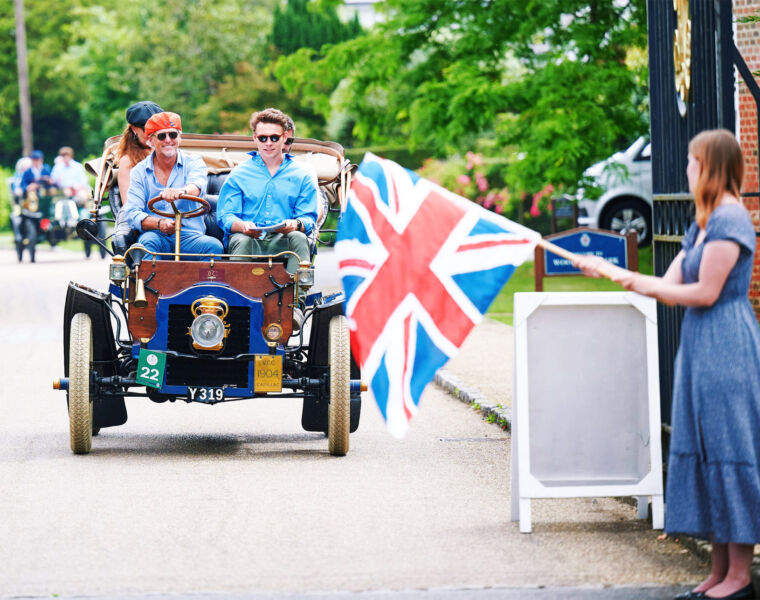

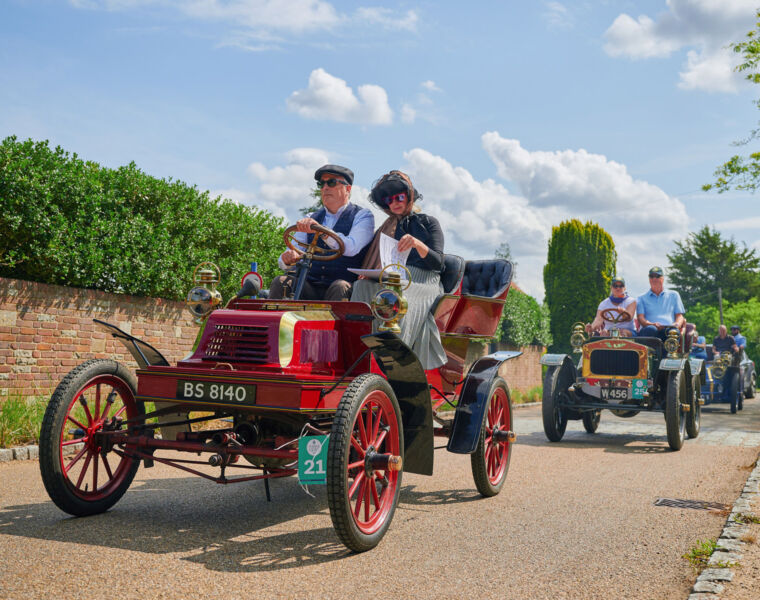
You must be logged in to post a comment.